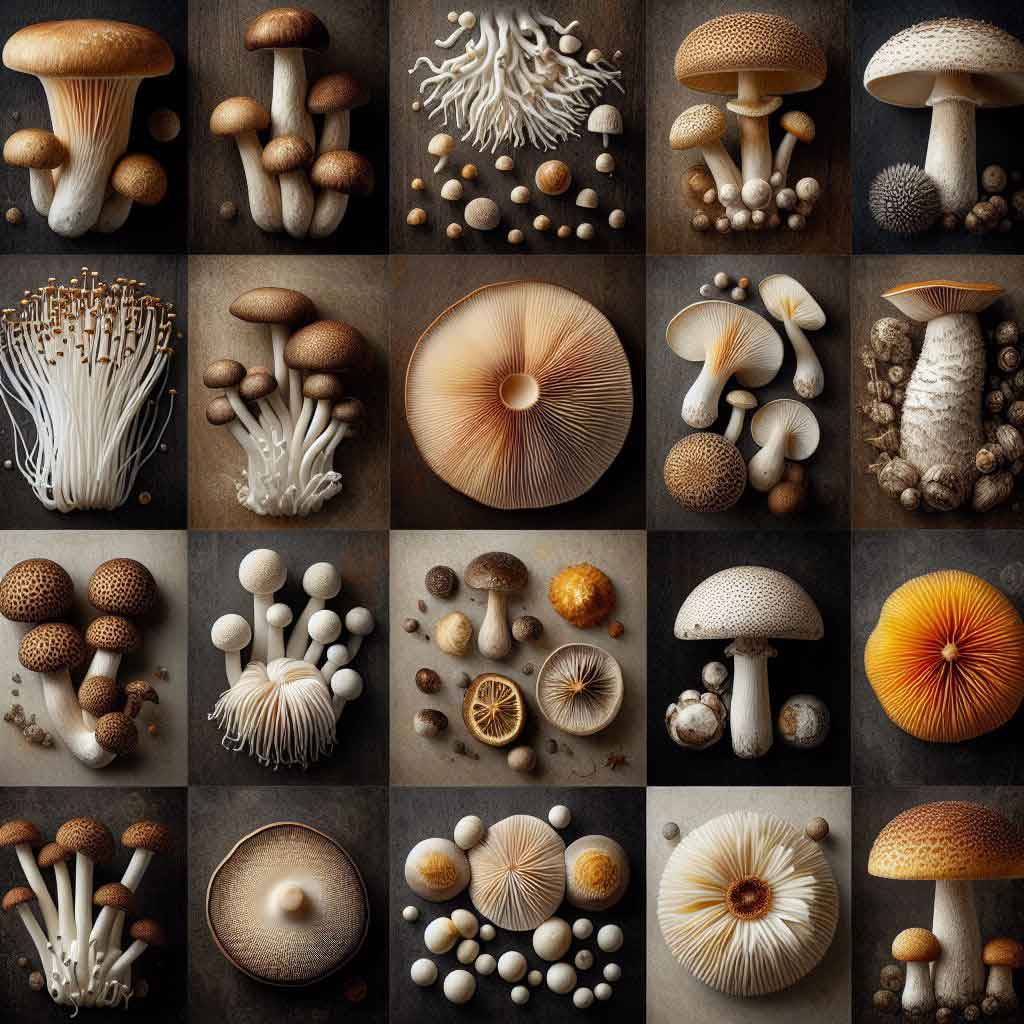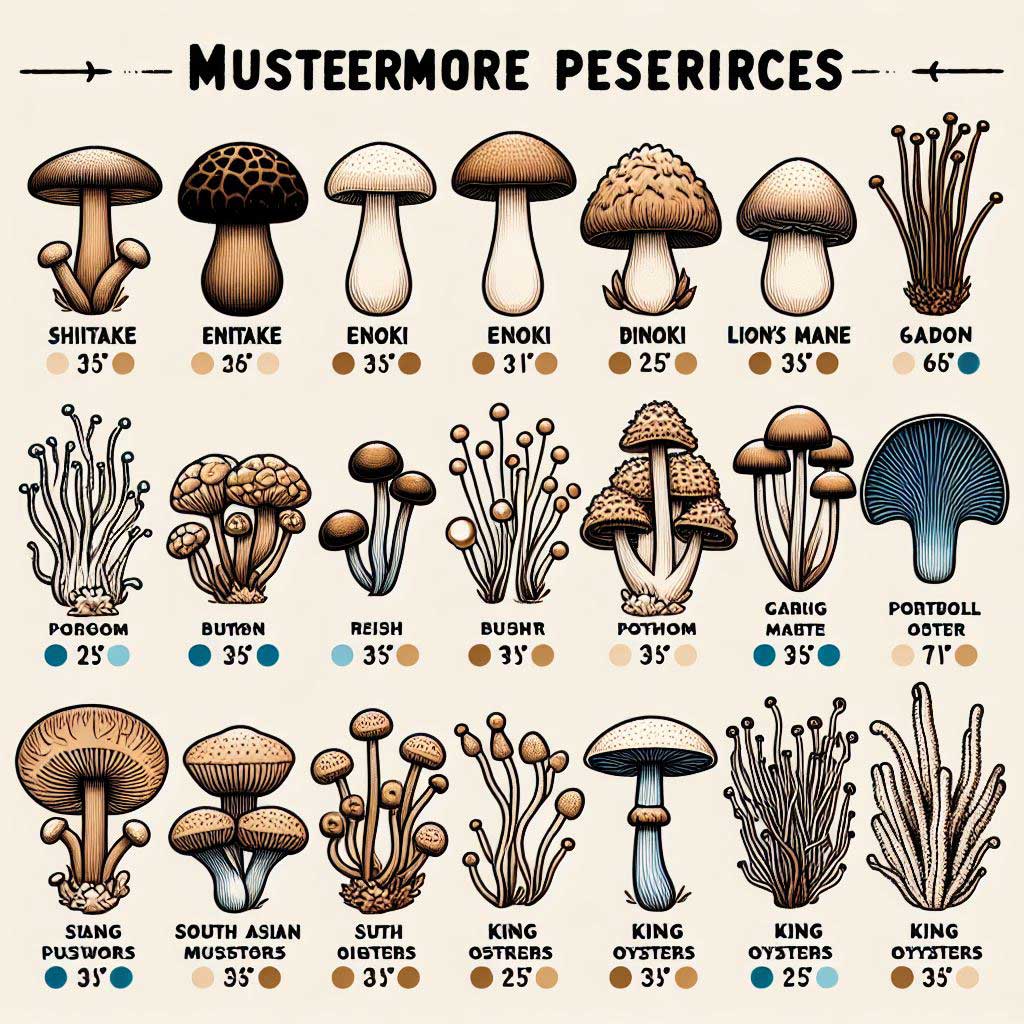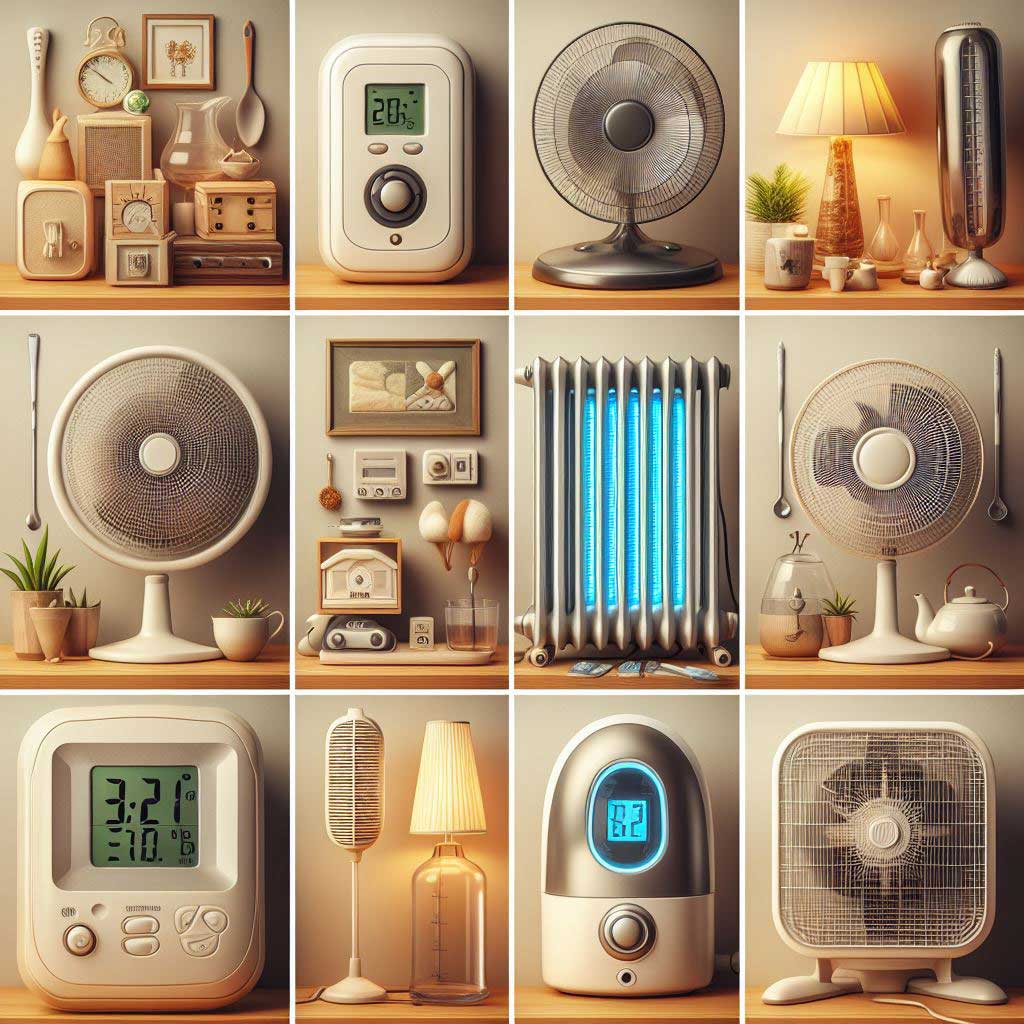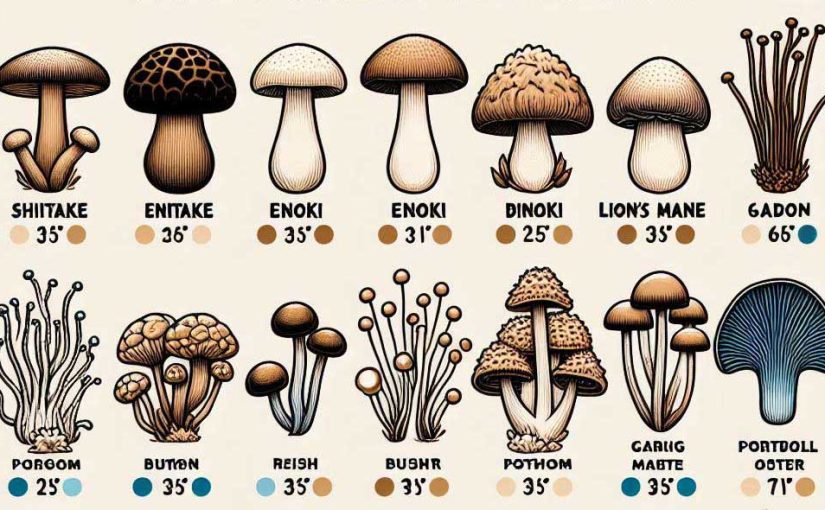You can grow mushrooms at home with some basic equipment and materials, and they are delicious and nutritious food. But what is the best temperature for growing mushrooms? And how does temperature affect the different stages of mushroom growth?
In this blog post, we will provide answers to your questions. Additionally, we will present a list of the optimal temperature ranges for various popular mushroom types. We’ll give you tips on maintaining the right temperature for growing mushrooms and handling temperature changes.

How Temperature Affects Mushroom Growth?
Mushroom growth is divided into two main phases: mycelium growth and fruiting body formation. Mycelium is a white, thread-like network of fungal cells that grows in things like straw, sawdust, or coffee grounds. The fruiting body is the part of the mushroom we eat, which emerges from the mycelium when the conditions are right.

Temperature is important for mushroom growth. It affects the fungus’s metabolism, enzymes, and genes. Different types of mushrooms have different temperature preferences, depending on their natural habitat and adaptation. We can group mushrooms into three categories based on temperature: low, medium, and high.

- Low-temperature mushrooms grow best in cold climates like winter or early spring. The mycelium growth requires temperatures between 5°C and 15°C. The fruiting body formation, on the other hand, requires temperatures between 10°C and 18°C. Some examples of low-temperature mushrooms are shiitake, enoki, and lion’s mane.
- Medium-temperature mushrooms grow best in temperate climates, such as spring or autumn. They usually require a temperature range of 15°C to 25°C for mycelium growth and 18°C to 24°C for fruiting body formation. Some examples of medium-temperature mushrooms are button, portobello, and reishi.
- High-temperature mushrooms grow best in warm climates, such as summer or late spring. They usually require a temperature range of 25°C to 35°C for mycelium growth and 24°C to 30°C for fruiting body formation. Some examples of high-temperature mushrooms are oysters, king oysters, and straw.
The Ideal Temperature Ranges for Some Popular Types of Mushrooms
We made a mushroom growing temperature chart that shows the best temperatures for different mushrooms. You can refer to this chart to help you grow mushrooms effectively.
While the chart provides general guidelines, it’s important to remember that some mushrooms can thrive in slightly hotter or colder temperatures.
| Mushroom Type | Ideal Temperature for Mycelium Growth (°C) | Ideal Temperature for Fruiting Body Formation (°C) |
|---|---|---|
| Shiitake | 5-15 | 10-18 |
| Enoki | 5-15 | 10-15 |
| Lion’s Mane | 5-15 | 10-18 |
| Button | 15-25 | 18-24 |
| Portobello | 15-25 | 18-24 |
| Reishi | 15-25 | 18-24 |
| Oyster mushrooms | 25-35 | 24-30 |
| King Oyster | 25-35 | 24-30 |
| Straw | 25-35 | 24-30 |
How to Maintain the Optimal Temperature for Your Mushroom Grow?
Maintaining the optimal temperature for your mushroom growth is essential for ensuring healthy and fruitful mushroom production. However, depending on where you live and what season it is, you may face some challenges in keeping the temperature within the ideal range.
- You need to keep the right temperature for your mushrooms. We will tell you how to do that and make your mushrooms happy.
Choose the right location for your mushroom growth
The location of your mushroom growth can significantly impact the temperature and humidity levels. Ideally, you want to choose a dark, well-ventilated place insulated from external temperature changes. Some possible locations are a basement, a closet, a garage, or a shed.
- Please do not put your mushrooms where the sun, wind, or heat can reach them. They can make your mushrooms too hot or dry.
Use a thermometer and a hygrometer to monitor the temperature and humidity.
-
- A thermometer and a hygrometer are essential if you’re growing mushrooms. These tools help you measure and adjust your mushroom growth’s temperature and humidity levels.
- You can find digital or analog thermometers and hygrometers at any hardware store or online. Place them near your mushroom growth and check them regularly. The ideal humidity level for most mushrooms is 80% to 90%.
Use a heating mat, a fan, or an air conditioner to regulate the temperature.
Different types of mushrooms and the temperature of the environment they grow in may require different devices to regulate their growth. To choose the right device for your specific needs.

-
- A heating mat is a device that emits gentle heat. You can place it under or near your mushroom grow. This device is useful for cold seasons or low-temperature mushrooms.
- A fan is a device that circulates the air and creates a breeze. It is helpful for hot seasons or high-temperature mushrooms.
- An air conditioner is a device that cools the air and removes moisture. It is useful for hot and humid seasons or high-temperature mushrooms.
You can find these devices at any hardware store or online. Make sure to adjust their settings according to your mushroom’s temperature and humidity levels and the type of mushrooms you are growing.
Use a humidifier, a spray bottle, or a misting system to increase the humidity.
Humidity is essential for mushroom growth. It keeps the mushroom moist and helps form fruiting bodies. Depending on your mushrooms and the weather, you may need different devices to increase humidity. These devices are:
-
- A humidifier: It adds moisture to the air. It is suitable for dry seasons or low-humidity mushrooms.
- A spray bottle: It sprays water droplets. It is good for manually spraying water on the grow or the mushrooms.
- A misting system: It creates a fine mist of water. It is suitable for automatically spraying water on the grow or the mushrooms.
You can buy these devices at any hardware store or online. Make sure to set them according to your mushroom grow’s humidity and the type of mushrooms.
Conclusion
Temperature affects how mushrooms grow—different mushrooms like different temperatures. You can group mushrooms into three types by their temperature needs: low, medium, and high.
It would help to keep mushrooms at the right temperature to grow them well. The right temperature may change depending on the mushrooms and the weather. You can use tools to check and adjust the temperature and humidity of your mushroom growth.
